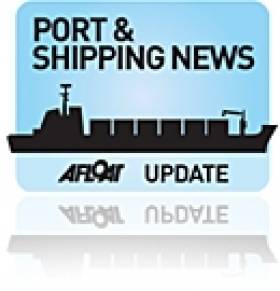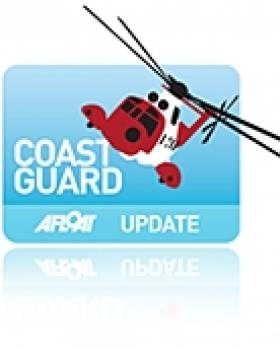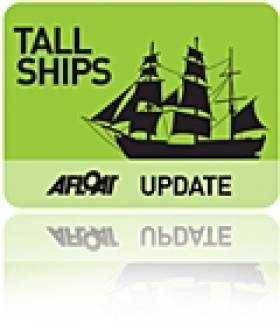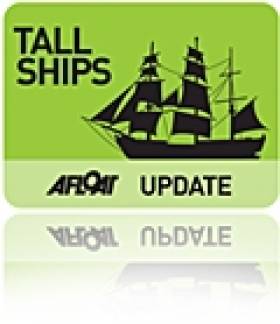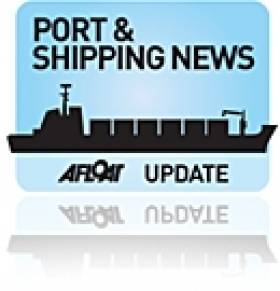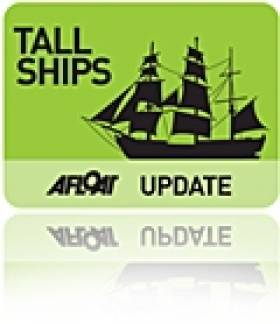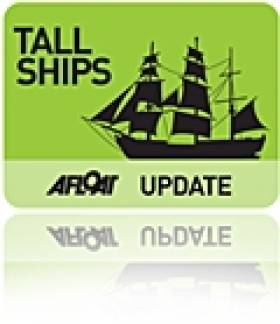Displaying items by tag: ship
'Belfast Built Ships' Documents Much More Than Titanic
#BOOK REVIEW – This is a book which documents the entire output of the Belfast shipyards since construction of the first ship "Silistria", launched in 1854, was begun by Robert Hickson. Interestingly Belfast had no natural advantages for the building of ships, no ready supply of raw materials, no tradition of shipbuilding, no major ship-owners, no skilled labour in metalwork and engineering. How did it happen that a provincial town, which became a city only in 1888, developed into one of the world's great industrial centres? The author has a detailed series of analyses which answer this question in terms other than the usual suggestions of nepotism, Protestant work ethic and sheer good luck. They make interesting and enlightening reading.
At the core of the book is a beautifully presented catalogue of ships in which data for each of 1589 vessels totalling 13,886,873 tons is laid out in table form. Interesting historical notes are added by way of lively narratives as appropriate. At intervals on facing pages there are line drawings or good side view photographs mostly arranged in groups of five ships to a page. The result is a pictorial history of developments in general design and layout over one hundred and fifty years which I found instructive.
The narrative section of the book begins with an account of the creation of the three Belfast shipbuilding companies. In 1853 Belfast Harbour Commissioners leased out a yard on Queen's Island which Edward Harland was appointed to manage in 1854 and purchased in 1858. Out of this came Harland and Wolff. A second yard, McIlwaine and Partners, was set up in 1867 and in 1879 two trained premium apprentices left positions in Harland and Wolff to start a third yard, Workman Clark, at a site next to their former employer. These were not the ailing shipyards to which our generation later became accustomed but dynamic fast-growing businesses perhaps more like what we see today in certain information technology sectors and they were set up by very young men. Harland was twenty-three years old when appointed and Workman and Clarke were twenty-three and eighteen years old respectively. Their stories are exciting and dramatic.
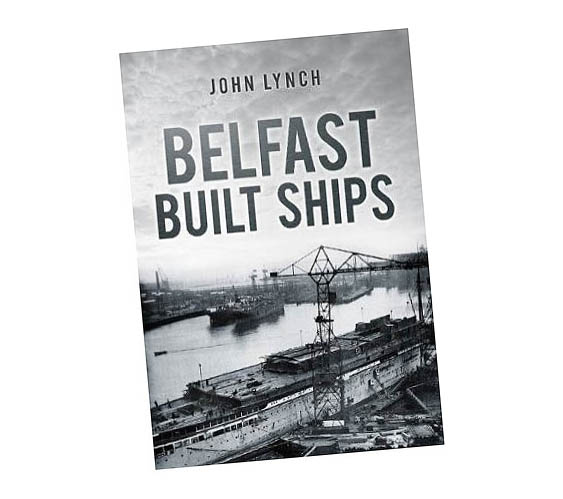
The author next deals with Output of the Belfast Shipyards in which he explains the impact of developments in economics, commerce, politics and technology over a span of one hundred and fifty years. How he achieves this is worthy of study i.e. how he spans from the era of sail all the way to air travel while still keeping the thread of his story. Basically he breaks the one hundred and fifty years into eight slices of unequal but meaningful time spans thereby making the subjects accessible to the reader. Each of these sections has its own interesting developments but in 1940 there is a surprise. Suddenly she is there again, two hundred feet long, broad, chunky and graceless, would roll on wet grass: "Compass Rose" the fictional Flower Class Corvette and heroine of Nicholas Monsarrat's famous book "The Cruel Sea" is under construction. Belfast built 34 of these corvettes and the extract from Monsarrat's book is quoted to describe their appearance. Of course the effect was to send me scurrying to the attic for my dog-eared 1956 copy of the book to see if the magic of Monsarrat's prose still works. It does, and maybe that's what a book like "Belfast Built Ships" is really for - to send you scurrying down the corridors of memory.
With regard to "a famous White Star liner lost on her maiden voyage" the author is restrained and factual throughout. However in the third section of the book entitled Urban Myths and Forgotten Histories the gloves come off and his weapon of choice is the undisputable fact. His first target is those who claim "The greatest loss of life in a disaster involving a Belfast ship was on Titanic", next the hapless Nomadic myth is demolished, then on to her correct Yard Number – it is 401 not 909E. The carnage of myths continues but I cannot get my mind off that wrong yard number 909E. Does anyone else get a whiff of the Opium of the People?
I found the author's balanced comments an antidote to the current mania for blather on events in the Atlantic in April 1912. In fairness he is never critical of any aspect of the Titanic herself which he describes as "one of the greatest ships of its kind produced in Belfast, or indeed anywhere". His main criticism is of the cult that has grown up around this one ship as if it were the only important example of Belfast shipbuilding. Significantly his vocabulary may contain the explanation of what is going on when he describes the cult as "monodical". Monody is a term from Greek tragedy and there is much of Greek tragedy and mythology in the Titanic story. The name Titanic itself is straight out of Greek mythology and the great sin of Greek tragedy, Hubris, is to be found all over the story as routinely related. Perhaps it is an encounter with poetic truth which draws people back again and again to this rather than other maritime stories?
This is a book which will delight all "ship freaks" and provide them with hours if not years of ongoing pleasure exploring its seemingly endless corridors of enquiry. The quality of the research and presentation ensures that it will be of ongoing value to social researchers and transport historians and it is also a book which will please anybody who worked or has ancestors who worked on any of the 1589 ships. Most importantly it will have special significance for those thousands of people whose families worked in the Belfast yards. The yards have now ceased building ships but as they move from industry into history a large part of them survives in this formidable account of their formidable output. J K
BELFAST BUILT SHIPS
By John Lynch. Published by The History Press
Softcover, 303 Pages, ISBN 978 0 7524 6539 5
Price £19.99
Swansea-Cork Ferry MV Julia For Sale
#SWANSEA CORK FERRY – The merchant ship MV Julia which operated as the Cork Swansea Ferry for the last two years is up for sale following the closure of The Fastnet Line ferry service and the loss of 78 jobs.
According to Dominic Daly Auctioneers the owners of the 1982–built vessel, a Finnish Bank, are inviting offers for the vessel on an 'AS SEEN AS IS' basis'. A guide price is expected shortly
As previously reported on Afloat.ie, the operator had been in examinership since last November, and a restructured business plan had been submitted with a view to resuming high-season service in April. However, in a statement the owners of the Fastnet Line said they had been unable to raise the €1m-plus investment required and that the examinership had "failed".
The ship is currently lying alongside at Cork Port.
The basic details of the vessel are as follows:
IMO Number: 8020642
Year of Build: 1982 (Germany)
Gross Tonnage: 22,161
DWT: 2,880
Net Tonnage: 8,921
LOA: 153.4
Length (BP): 136.02
Breadth: 24.24
Draught: 5.82
Height: 43.0
Displacement: 12,380
Passengers: Unberthed: 1,062
Cabins 344
Berths: 938
Crew: 110
Lorries: 110
Cars: 550
Ro-Ro Lanes: 710m x 5.20m 4.50m
Ramps: 1 Port 5.56 x 6.16 x 0
1 Starboard 5.56 x 6.16 x 0
1 Centre Or Only 9.95 x 6.68 x 0
Bow Door & Ramp, Stern Ramp
Cargo Ready for Transfer from 'Cracked' Ship
#SHIPPING – Plans to remove the cargo of 54,304 tonnes of Vacuum Gas Oil from the merchant vessel 'Genmar Companion' have now been finalised. The transfer will start on 31 December 2011 (weather permitting).
The vessel has been sheltering off the Copeland Islands at the entrance to Belfast Lough since 16 December. It was 40 miles west of Tory Island, Co. Donegal, on its journey from Rotterdam to New York, when the Master reported a crack on its upper deck. This crack did not appear to extend to any of the oil cargo holding structures but, as a precautionary measure, the vessel's Master chose to seek both shelter and advice before continuing passage.
The Bermudan-flagged product tanker made its way to the Lough to enable surveyors to inspect the ship. The inspection, by the owners, a representative of the classification society (American Bureau of Shipping) and the MCA took place on 18 December.
Following this inspection all parties agreed that, as a precautionary measure, the cargo should be removed and the ship repaired. As there are no shore reception facilities at Belfast Harbour for a tanker of this size the only option is to transfer the cargo to another vessel (known as Ship To Ship Transfer).
Preparations for this transfer have been underway for several days and stringent safeguards will be observed throughout the operation to assure the safety of the crew, the environment and other vessels in the area.
Following the transfer of the cargo to the vessel 'BW Seine' the 'Genmar Companion' will enter Belfast Harbour for repairs.
Hugh Shaw, The Secretary of State's Representative for Maritime Salvage and Intervention said:
"Since the 'Genmar Companion' arrived at Belfast Lough I have been working closely with a number of parties including representatives from the Owners and Charterers, Belfast Harbour and the Northern Ireland Environment Group chaired by the Northern Ireland Environment Agency.
"We are all agreed that transferring the cargo in the Lough is the most sensible course of action. Although this is a fairly routine operation, it would not normally be carried out in the current location.
"This ship to ship transfer will be carried out by Fendercare Marine and the process is expected to take approximately 24-36 hours."
Northern Ireland Environment Minister, Alex Attwood, has been keeping a close eye on the situation. He said
"I have been actively seeking reassurance that there is no threat to our marine environment from this tanker. My officials will be fully engaged with the MCA and the Secretary of State's Representative until the Genmar Companion is safely moored in Belfast for repairs."
Sail Training Fleet to Race to Weymouth and Portland
The charities running the vessels use Sail Training to provide life changing opportunities for young and disabled people from across the UK. Weymouth and Portland National Sailing Academy (WPNSA) is working together with the Association of Sail Training Organisations (ASTO) to organise this spectacular youth event.
The ships will depart London on 11th June, 2012 and race to Weymouth and Portland, arriving on 15th June, 2012. On the 16th June, HM The Queen's representative in Dorset, the Lord Lieutenant, Val Pitt-Rivers will start another race within Weymouth Bay by firing a cannon from the Nothe Fort. The races will be followed with a prize-giving at the Academy in the evening of the 16th.
John Tweed, Chief Executive at the Weymouth and Portland National Sailing Academy, commented, "This is a first class opportunity to link young people from Dorset with London in such a positive youth adventure. The sailing will be just a small part of the overall experience; the young people involved will also gain valuable life-skills to benefit them for a long time afterwards. It's a very exciting project and one we're very pleased to be on board with.
The event has been strongly supported not only by the Sailing Academy working closely with ASTO; we have also received enormous help from Portland Marina and Portland Harbour Authority.
The spectacle provided by these remarkable vessels will be a great opportunity for people in Weymouth and Portland to come and enjoy – and start to build excitement for the very special sailing events taking place a few weeks later."
There are 60 places available for young people from Dorset to take part in this adventure. Schools are being contacted about this opportunity, but anyone interested in taking part should contact ASTO on 02392 503 222. To find out more about Sail Training, take a look at www.uksailtraining.org
New German Tall Ship Launched
Already on the day before the ceremonies, an unique welcome comitee will assemble on River Weser to welcome the two tall ships. Several traditional ships, tugs and other boats will expect Alex I and Alex II on Friday September 23rd, when both windjammers are going to sail up River Weser passing Seebäderkaje about 2.15 p.m. Afterwards, the Ships will enter Neuer Hafen. After mooring there will be a skipper party with live music at the party pavilion on the pier.
The charitable DSST, celebrating its 25th anniversary this year, operates the tall ship Alexander von Humboldt with the goal to familiarize young and young at heart people to experience traditional seamanship on a historic ship. The goal will remain the same with Alex II. The three-masted ship was built at BVT Brenn- und Verformtechnik Bremen, a part of Rönner Group.
Dun Laoghaire Yacht Clubs Voice Concern Over Plan
Dun Laoghaire Yacht Clubs are voicing concerns about the impact on sailing if a 'cruise ship jetty' is constructed as part of the recently published harbour masterplan.
Dublin Bay Sailing Club, Dun Laoghaire Motor Yacht Club, National Yacht Club, Royal Alfred Yacht Club
Royal Irish Yacht Club and Royal St George Yacht Club. are also concerned about access to the water if a proposed 'pedestrian walkway' in front of the waterfront clubs was completed.
The clubs have engaged 'professional help' to prepare a submission to outine the concerns.
Also seen as a problem is the 'lack of sufficient facilities in the masterplan for hosting significant international sailing events'.
A survey in 2009 by the Irish Marine Federation (IMF) calculated a €3million spend by participants connected with the 500-boat Volvo Dun Laoghaire regatta. The clubs have previously stated they see the harbour's future as a leisure facility.
A masterplan model was on display by the Harbour Company in the month of August.
Writing to members in the current edition of the National Yacht Club's newsletter commodore Paul Barrington says the clubs 'hope to further engage with the harbour [company] to find a mutually acceptable way forward'.
Water Rat: Harbour Plan is a Curate's Egg
New NATO Website to Combat Piracy Goes Live
Having received a briefing on the new website, the Commander of MC Northwood, Admiral Sir Trevor Soar KCB OBE said;
"Piracy is a serious threat for the shipping community and anything that can be done to deal with and overcome this issue is to be welcomed. The NATO Shipping Centre has listened to their users and responded to their needs with a new, more interactive and relevant website demonstrating that NATO and the shipping community are working together to tackle the scourge of piracy."
Tall Ships 2011: Young Sailors 'Buoyed' with their Successes
Not only has their ship, The Moosk been placed third in class in the first leg of the race, but they were awarded the youngest crew trophy and won their skipper's weight in food and drink having been the first 2011 tall ship to arrive at Unst.
Eighteen of the St Budeaux School's 14-19 year olds have been involved in the international event which started in Waterford, Ireland and included ports of call at Greenock, Scotland and Lerwick in the Shetland Isles, continuing to Stavanger in Norway before finally dropping anchor at Halmstad in Sweden at the beginning of August.
The 18 students who successfully completed a rigorous selection before finally becoming crew for a section of the race on the tall ship Moosk were split into three groups.
The first six sailed from Plymouth to Waterford where six more Marine Academy students took over and raced in the first leg, Race One, from Waterford to Greenock. Once in Greenock, the crew changed again and the final six students sailed to Lerwick before returning home this weekend.
The young sailors are buoyed up with their successes.
In their latest messages on Facebook they say: "Wahoo just arrived in Lerwick, we've had an amazing time already. We've been to Unst and rounded Mukkle Flugga, the most northern point in Britain. We won the Captain's Weight in Unst - proud - and had a parade with Vikings. All in all it's been amazing so far."
Marine Academy Plymouth is planning a celebration evening in September for the students who joined hundreds of other youngsters crewing ships from Russia, Belgium, Germany, Sweden, Lithuania, Poland, Norway, Denmark, Colombia, Spain and France.
Helen Mathieson principal at Marine Academy Plymouth said: "The success of all our young people taking part in the fantastic event which is the Tall Ships Race is a very fitting end to the Marine Academy Plymouth's first year.
"All the students who have taken part have learned so much - about themselves, what they can achieve and how they can make success happen by working with others. All of them have been part of winning teams and have felt the joy of making it happen for themselves; their horizons have been widened by the whole experience."
Tall Ship Runs Aground off Scotland
The 100ft-long tall ship Irene of Bridgwater, with 10 people on board, became stuck in Lamlash Bay on its way to port at Greenock.
Clyde Coastguard said the ship was expected to refloat at high tide in the early hours of this morning. There was no danger to anyone on board.
Greenock is hosting the second stage of the race, following Waterford, Ireland. BBC News has more HERE.
Dunmore East Bids TallShips Farewell
As the Russian 'A' class Mir passed the LE Aoife off Dunmore East in mid-morning, the largest tall ship of the festival headed the start of the Parade of Sail, writes Jehan Ashmore.
Crowds left their cars in fields outside Dunmore East and descended into the harbour and surrounding headlands to witness the highlight of the four-day festival. Adding to the scene were the numerous leisure-craft, yachts and intrepid kayakers that gathered to greet the procession which took some two hours to pass the fishing harbour.
No sooner had the fully-rigged ship Mir had slipped beyond the anchored naval vessel that the gaff schooner Johanna Lucretia, under full sail came closer into view. She was closely followed by the Ocean Youth Trust Scotland's Bermudan cutter Alba Explorer.

The Russian 'A' class Mir passing the LE Aoife off Dunmore East. Photo: Jehan Ashmore
Of all the 45 tallships participating the Columbian Navy's barque ARC Gloria presented the most colourful entrant. She proudly flew a large horizontal tricolor of yellow, blue and red representing the South American nation.
When it came to the turn of the Europa to pass the LE Aoife, the tug Bargarth gave a wonderful send-off with the traditional display of water jets shooting sky-high, nearly reaching the top of the three-masted barque.
Marking the tail-end of the parade was the Jubilee Sailing Trust's Lord Nelson, another barque that departed the estuary with the Hook Head Lighthouse forming a majestic backdrop.
At this stage several of the large tallships could be seen on the far horizon in preperation to the start of the first race leg of this years Tall Ships Races....next port of call Greenock!
- Waterford
- ship
- Dunmore East
- Lord Nelson
- Waterford Estuary
- LE Aoife
- Sail Training International
- Jubilee Sailing Trust
- Tug
- Hook Head
- Tall
- JOHANNA LUCRETIA
- TallShips
- Waterford Harbour
- JST
- Europa
- Fullyrigged ship
- STI
- ARC Gloria
- Hook Head Lighthouse
- Mir
- Gaff schooner
- Ocean Youth Trust Scotland
- Bermudan cutter
- Alba Explorer
- Columbian Navy barque
- Bargarth
- Fastnet Shipping





























